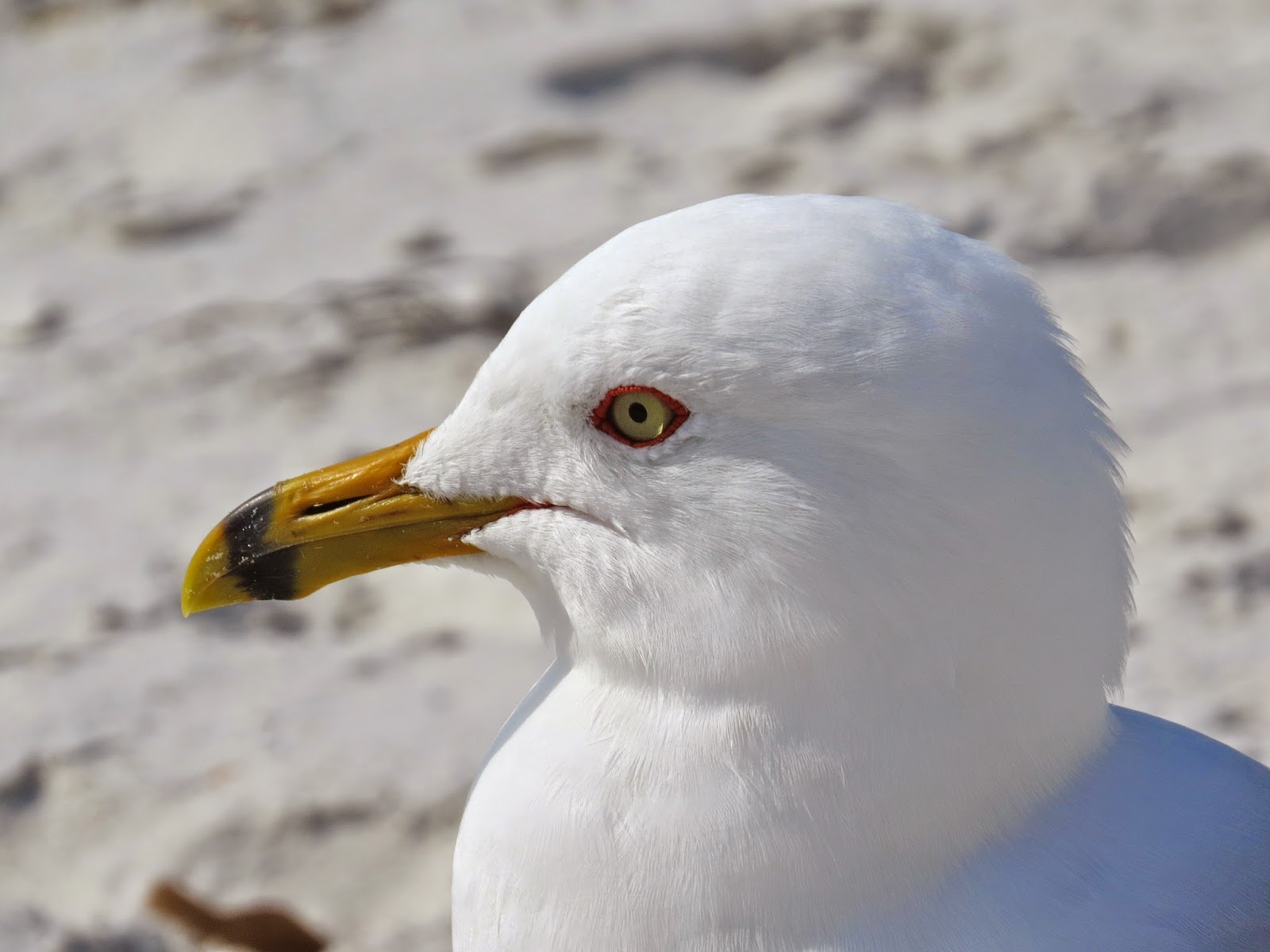I have been trying to identify the different birds I'm seeing on Pass-a-Grille Beach. A most useful book for this purpose has been
Florida's Living Beaches: A Guide for the Curious Beachcomber (that's me!), by Blair and Dawn Witherington. It has great pictures and lots of information.
So, the birds I'm sure about so far:
The Brown Pelican, he's easy.
 |
| The Willet |
Then there's the Willet, a type of sandpiper. He has greyish-brown feathers on top, a long brown bill and long legs. A very plain-looking bird (except when he takes flight--then you can see he has very striking black and white wing-tips). This is the bird I see most often when I go to the beach.

|
| A Ring-billed Gull |

|
| Ring-billed Gull close-up |
I've also finally figured out the gulls. The Ring-Billed Gull has a black stripe on his yellow bill, and yellow legs.
The Laughing Gull has a black head and black legs.
 |
| Two Laughing Gulls |
The juvenile Herring Gull is a big bird, with mottled brown feathers. You can tell he's a juvenile because of the brown feathers. When he matures he will be white and gray like other gulls.

|
| A juvenile Herring Gull |
So, now I'm trying to learn about Terns. The Terns are the birds you see hovering in the air over the surf, which will suddenly dive straight down into the water to catch a fish. When they come out of the water and fly away, they give a little shake to dry off, just like a dog!
I recently took a picture of several Terns standing in a group on the beach, and it helped a lot in my effort to tell them apart. The Forster's Tern, on the far left, has orange legs and a dark bill. The Sandwich Tern (the three birds in the middle of the group) has black legs and a black bill with a yellow tip (from dipping his bill in the mustard while making his
sandwich? No, actually the name relates to the Sandwich Islands). The Royal Tern is the biggest, on the far right, with dark legs and an orange bill.
 |
| Three kinds of Tern: Forster's Tern, Sandwich Tern, and Royal Tern |
 |
| Sandwich bill close-up |








